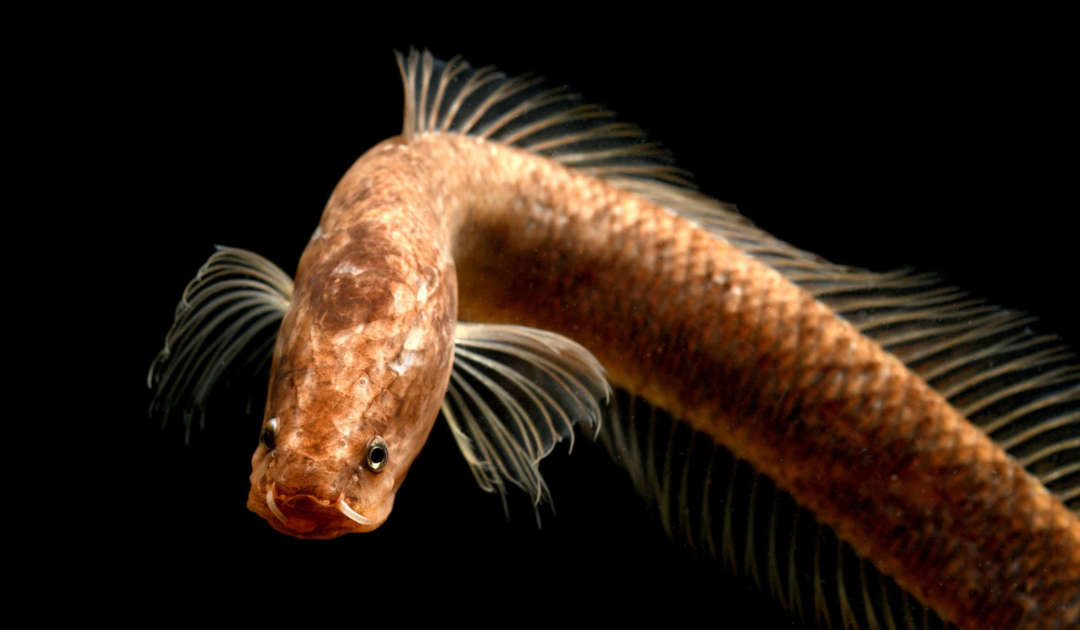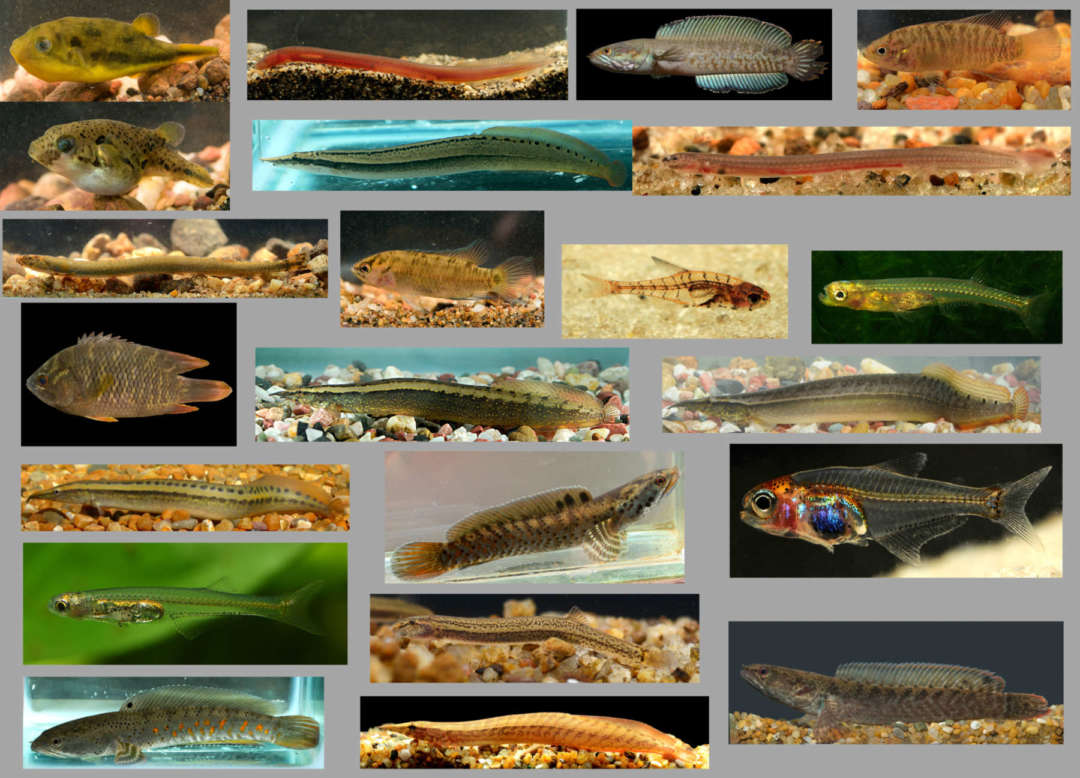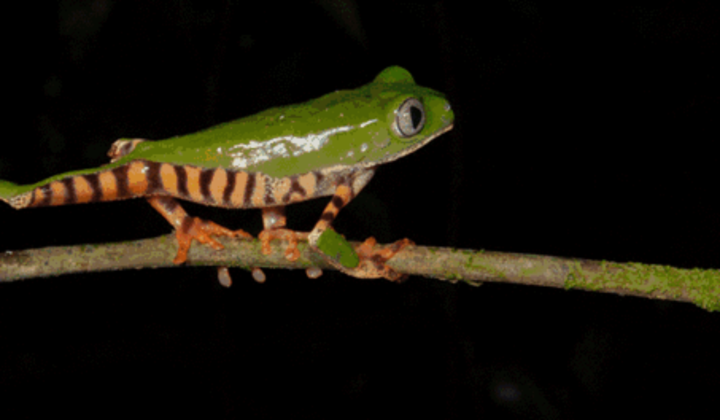Ichthyology
Research
Dresden
With more than 35,000 valid species fishes are the most diverse group of all vertebrates and every year more than 300 new species are being discovered and scientifically described. Fishes are without equal among vertebrates in terms of their diversity in size (ranging from the minnow Paedocypris progenetica maturing at 8 mm to the 18 m long hale shark), diversity in shape (from the extremely elongate snipe eel Nemichthys scolopaceus with more than 1000 vertebrae to the laterally flattened tailless Ocean sunfish Mola mola) or diversity in colouration (from the transparent Danionella translucida to the mandarin dragonet Synchiropus splendidus with psychedelic colours).
Fish research in the Ichthyology Section in Dresden focuses on comparative anatomy, phylogenetics, systematics and taxonomy of actinopterygian fishes. The research topics we address range from general questions of evolutionary biology and homology and studies of higher level relationships to basal problems in taxonomy and systematics of various fish groups. Although our primary approach to phylogenetic questions is and will remain deeply founded in morphology, we are interested in tests of morphology-based hypotheses with molecular data and we are involved in several ongoing collaborations.
Our taxonomic interest lies with the freshwater fishes of SouthernAsia, in particular those of India and Myanmar/Burma, both countries from which numeorus new species have been described in recent years. Combining traditional taxonomic methods with recent molecular approaches, i.e. integrative taxonomy, we address taxonomic questions. These systematic studies form the basis for more general questions about biogeographical patterns and how these have evolved.
The morphology based questions we are trying to resolve concern the relationship between evolution and development. We investigate how ontogenies change during evolution and try to understand how complex structures, like e.g. the tail of the ocean sunfishes, the Weberian apparatus of Otophysi, or recently the priapium of the penis-head fishes, have evolved. In addition, we study the ontogeny of characters to resolve long-standing homology issues and thus to get a better idea about the phylogenetic relationships of various groups. A research area that has occupied our interest for the past few years is that of miniaturisation in fishes and its anatomical and ontogenetic consequences for the organism. We have focussed in particular on the case of extreme organism-wide progenesis (developmental truncation) in the miniature species of the genera Danionella and Paedocypris. Studies into the evolutionary process of heterochrony are of special significance here.
Ichthyological research in Dresden is part of the Senckenberg Research Area Biodiversity and Systematics.
A selection of current projects
The subterranean fishes of the aquifers of the Western Ghats in India
A unique and endemic fauna of subterranean organisms, including 10 species of fishes, has evolved in aquifers along the coastal area at the foot of the Western Ghats, a hill range running along the west coast of peninsular India. The first fish species from this habitat was described in 1950, the most recent ones only last year (2019). Among these is the spectacular, new genus and species, Aenigmachanna gollum, the gollum snakehead.In a collaborative project with Rajeev Raghavan, Kerala University of Fisheries and Ocean Sciences in Kochi, Siby Philip, Nirmalagiri College in Kannur, und Neelesh Dahanukar, Indian Institute of Science Education and Research (IISER) in Pune, we are studying the anatomy and phylogenetic position as well as the population structure of these strange fishes.
The priapium of the penis-head fishes – an copulatory organ remarkable for its ontogenetic and evolutionary development
With slightly more than 20 species the Phallostethidae, the penis-head fishes, are only a small family within Atherinomorpha. Anatomically, however, the tiny 15-35 mm long transparent fishes are spectacular and unique. Males of the penis-head fishes have modified their pelvic fins into an extremely asymmetrical and anatomically highly complex copulatory organ, the priapium. The organ comprises more than a dozen skeletal elements, a number of associated muscles and openings of the digestive and urogenital systems that have been shifted anteriorly and asymmetrically onto one side of the priapium. In many species there is left and right sidedness of the asymmetrical priapium so that it is situated either on the right or on the left side of the ventral head and organized like mirror images. During my employment at the Natural History Museum in London this project was funded by the Leverhulme Trust and we investigated the ontogenetic development of the priapium and developmental regulation of its asymmetry at the genetic level. We have now comprehensive information on the morphological development of the skeleton of the priapium and are still trying to better understand the developmental genetic basis of asymmetry. This project is a collaboration with Ariane Standing and Gareth Fraser, University of Florida, Gainesville, and Heok Hui Tan, Lee Kong Chian Natural History Museum in Singapore.
Organism-wide progenesis in the miniature fishes Paedocypris and Danionella
Species of the cyprinid genera Paedocypris and Danionella are among the smallest of all fishes and vertebrates and mature at lengths of 8-10 mm. Anatomically these miniature fishes closely resemble larval stages of other cyprinids. They have evolved through the process of progenesis, which has influenced almost the entire organism. More than 60 of the skeletal elements that are present in closely related species, as e.g. the zebrafish Danio rerio, are missing in Paedocypris and Danionella. Current projects are focused on (1) understanding the influence of the evolutionary process of progenetic heterochrony on the development of these miniature fishes (2) investigating genomic correlates of miniaturization and/or progenesis. These are collaborative projects with Kevin Conway, Texas A&M University, College Station, und Lukas Rüber, Natural History Museum Bern.
Description of new fish species
We also maintain various collaborations with the aim of describing new freshwater fish species from Myanmar and India. The latest new species description is a spiny eel species from Myanmar, Macrognathus orthosemos (bottom row, middle).
Techniques applied in various research projects to date include clearing and double staining (Alcian- and Alizarin staining of cartilage and bone); light micoscopy (serial sectioning, staining, digital photography); scanning electron microscopy (glutaraldehyde fixation, critical point drying, coating); transmission electron microscopy (glutaraldehyde/osmiumtetroxid fixation, ultrathin sectioning).
Aditional techniques have been utilized in recent projects with collaborators: micro and nano CT scanning and image rendering; in situ hybridisation; immuno-staining and confocal microscopy.











